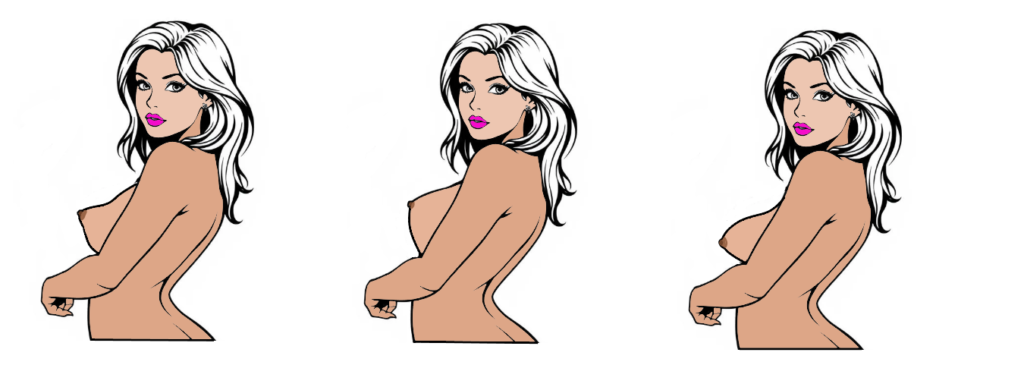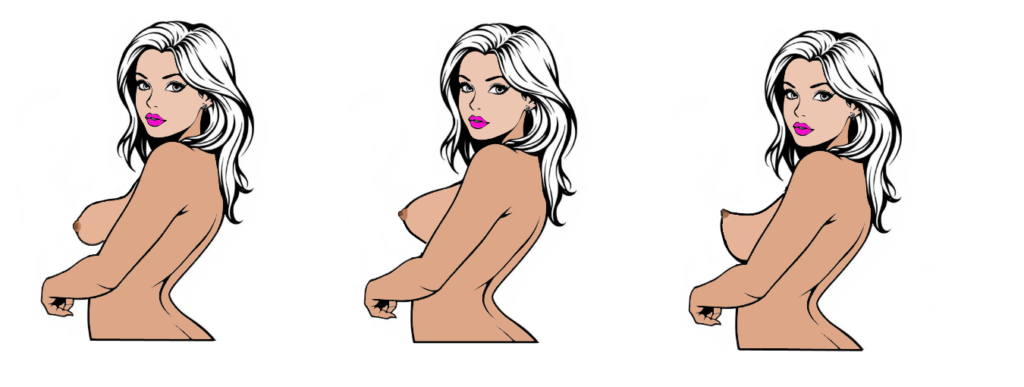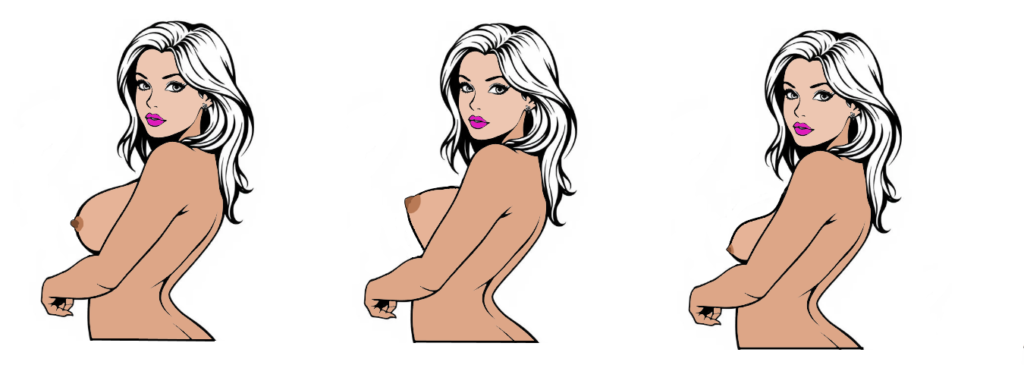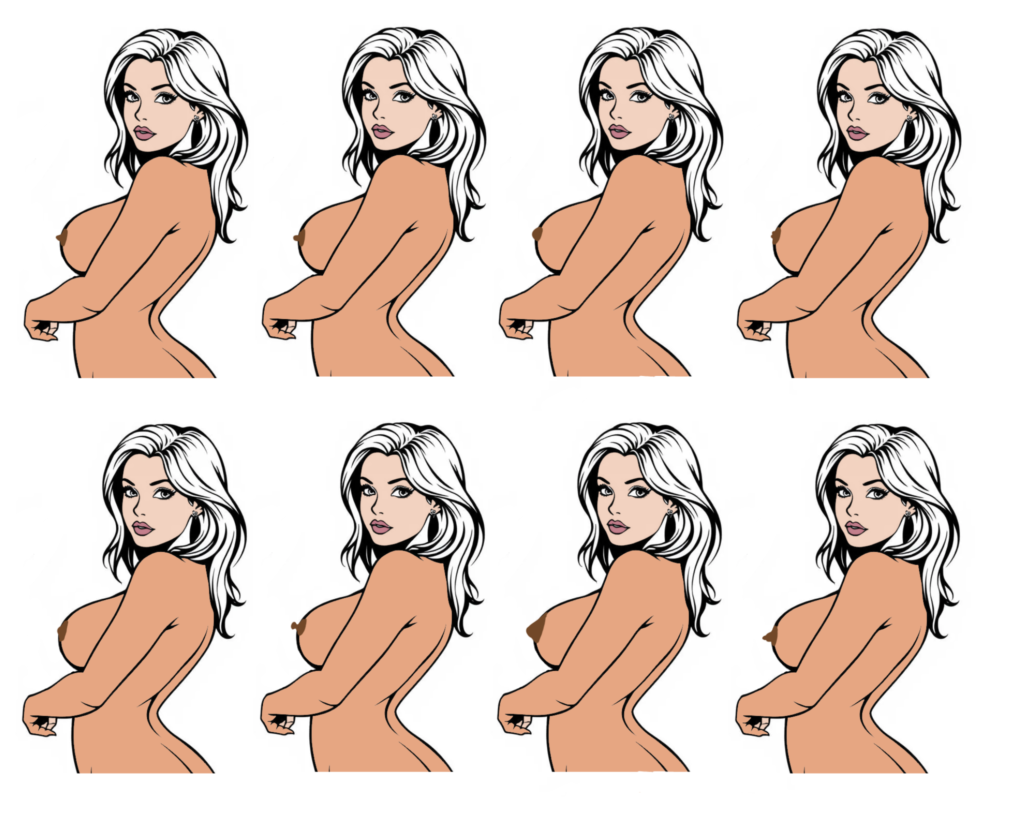Breasts and nipples shape
The shape of the nipples on every woman’s breasts is unique, making it challenging to classify them all. However, here are some major shapes of nipples



nipples shape
shapes of female nipples
Female nipples come in various shapes and sizes, and each type is completely normal. Here are the main shapes of female nipples:
- Protruding Nipples:
- These nipples stick out from the areola (the darker area around the nipple). They can become even more pronounced when a woman is cold or sexually aroused.
- Flat Nipples:
- Flat nipples are level with the areola and do not protrude outward. They may still become erect when stimulated.
- Inverted Nipples:
- Inverted nipples retract inward instead of sticking out. Some women may have inverted nipples all their lives, while for others, this can change over time.
- Puffy Nipples:
- Puffy nipples appear as a raised mound on top of the breast. Both the nipple and areola may look fuller and rounder.
- Bumpy Nipples:
- Many women have small bumps on their areolas called Montgomery glands. These glands help keep the nipple lubricated during breastfeeding.
- Hairy Nipples:
- It’s normal for some women to have fine hairs around their nipples or on their areolas. This varies from person to person.
- Supernumerary Nipples:
- Some people may have extra nipples, known as supernumerary nipples, which can appear anywhere along the milk lines of the body.
- Unilateral Inverted Nipples:
- This is when one nipple is inverted while the other is not, which can be perfectly normal if it has always been that way.
Conclusion
In summary, female nipples can take many forms, including protruding, flat, inverted, puffy, bumpy, hairy, and even extra ones in some cases. All these variations are completely normal and part of human diversity.

- FAQ
What are nipples?
Nipples are small, raised areas on the surface of the breasts that contain openings for milk ducts.
What is the purpose of nipples?
Nipples allow milk to be delivered from the mammary glands to a baby during breastfeeding.
Can nipples look different from each other?
Yes, it is normal for one nipple to look different from the other in size, shape, or color.
What are inverted nipples?
Inverted nipples are those that point inward instead of protruding outward.
Are inverted nipples common?
Yes, inverted nipples are relatively common and affect about 2% of people.
What is the average size of a nipple?
The average nipple is about 1.3 cm in diameter and 0.9 cm in height, similar to a ladybug’s size.
Do nipple sizes change over time?
Yes, nipple sizes can change due to factors like pregnancy, hormonal changes, or aging.
What causes nipple pain?
Nipple pain can be caused by breastfeeding, hormonal changes, or skin conditions like eczema.
Is it normal for nipples to have bumps?
Yes, small bumps around the areola (the darker area surrounding the nipple) are normal and are called Montgomery glands.
Can nipples change color?
Yes, nipple color can vary from light pink to dark brown and may change with hormonal fluctuations or age.
What is a supernumerary nipple?
A supernumerary nipple is an extra nipple that some people have; it is usually harmless and not uncommon
Can men have nipples that produce milk?
Yes, men can experience a condition called galactorrhea where they may produce milk under certain circumstances, though it is rare.
How do hormones affect nipples?
Hormones can cause changes in nipple sensitivity, size, and color throughout life stages like puberty and pregnancy.
Why do some women have flat nipples?
Flat nipples may occur naturally due to genetics or can be influenced by hormonal changes; they can also be temporary during breastfeeding or engorgement periods.
How can you care for sore nipples while breastfeeding?
To care for sore nipples during breastfeeding: ensure proper latch technique; apply lanolin cream; keep them dry between feedings; and consult a lactation consultant if needed for additional support .
Can you breastfeed with inverted or flat nipples?
Yes! Many women with inverted or flat nipples successfully breastfeed by using techniques such as pumping before feeding or using a breast shield .